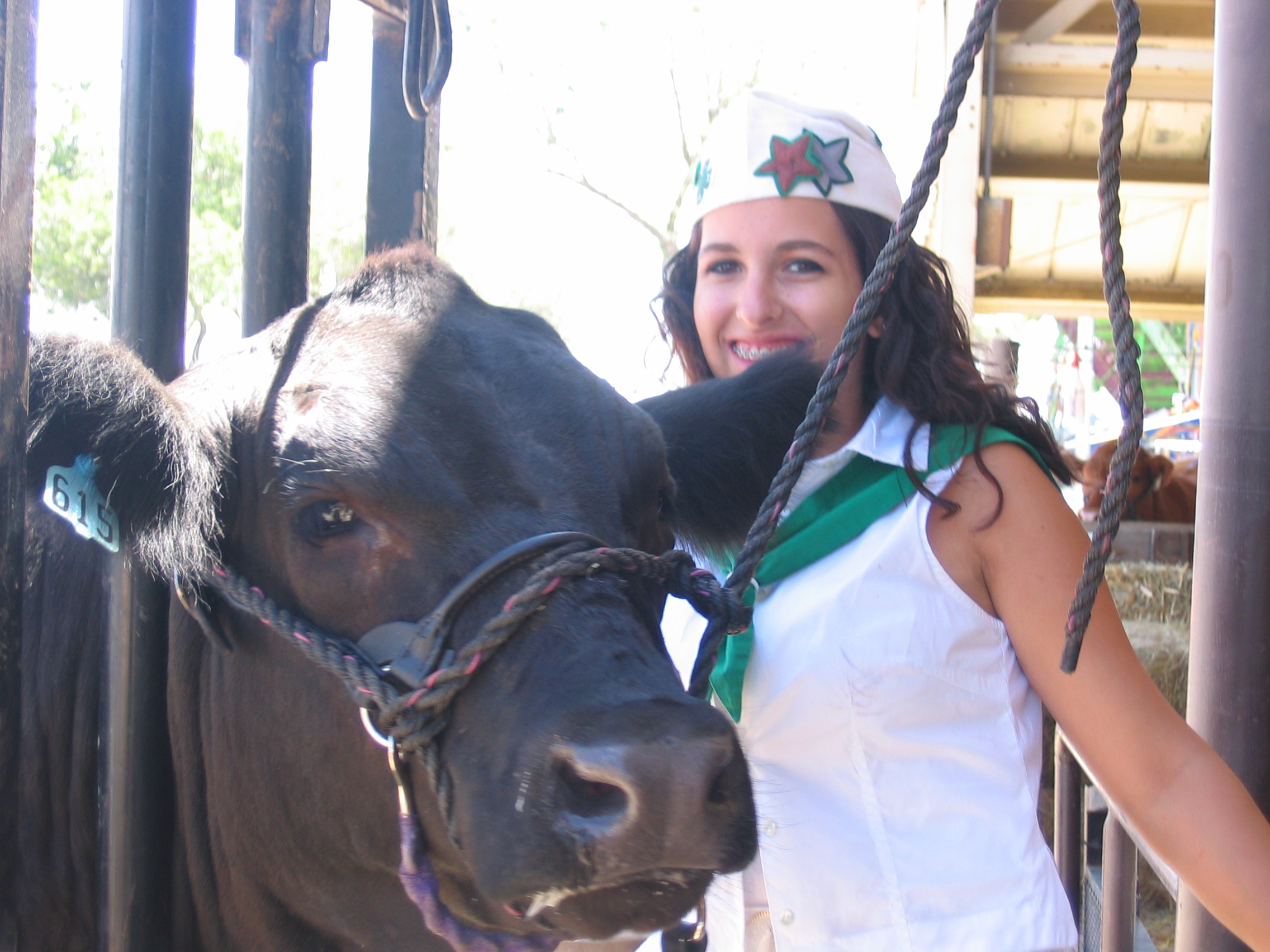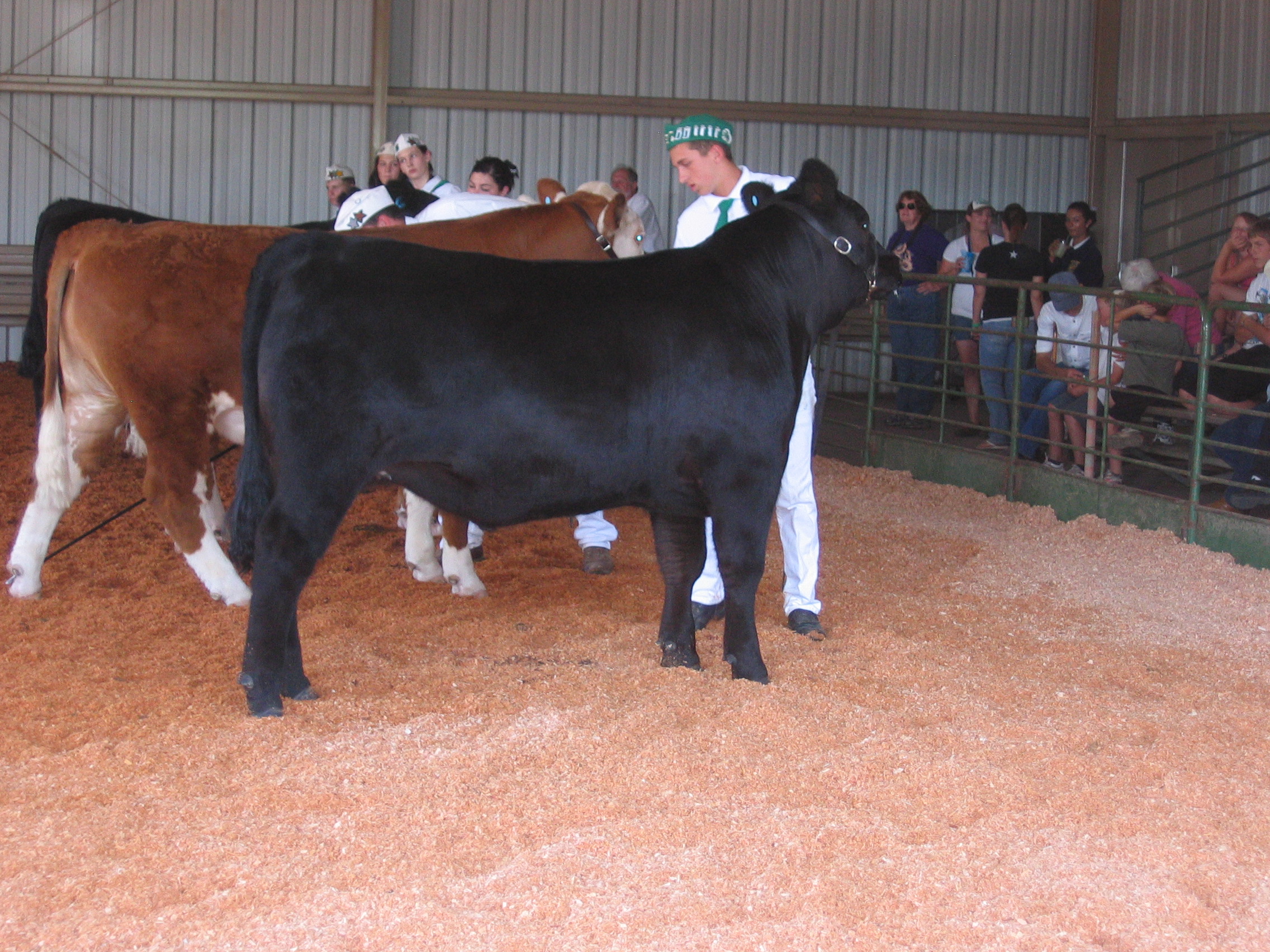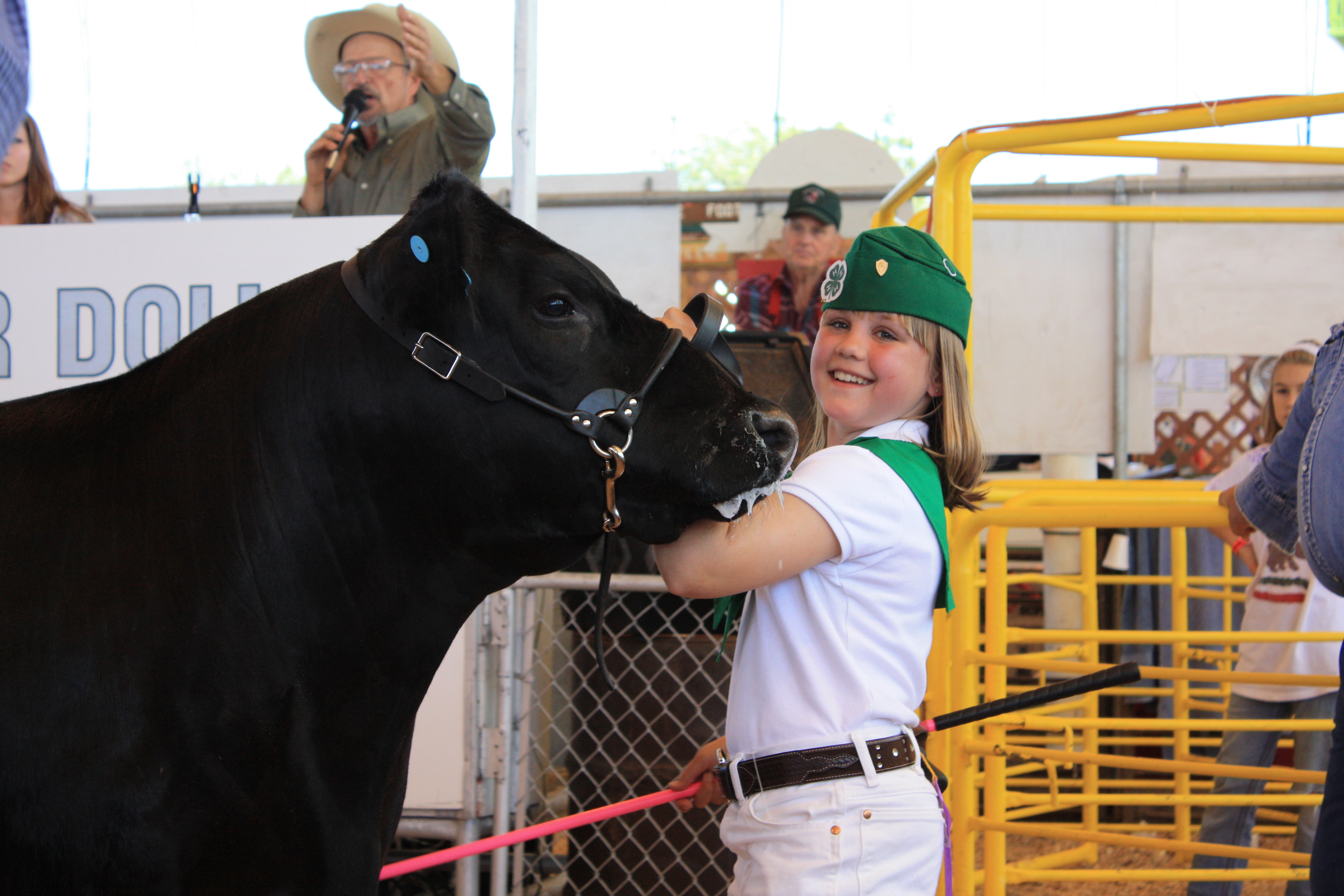It’s national 4-H week and as a member for many years, today I celebrate 4-H!
As a loyal 4-H member, I pledge my head to clearer thinking, my heart to greater loyalty, my hands to larger service, my health to better living for my club, my community, my country, and my world. Although I was a 4-H member many years ago now, I still remember the pledge by heart. I guess saying it for 9 years once a month does that to you. I became a 4-H member at nine years old and remained in 4-H until I graduated high school. I know animal projects tend to take the spotlight when you talk about 4-H and people outside of the program just think it’s a program to raise animals, show them, and sell them at your local fair.. Let me tell you 4-H is so much more than that.
I owe 4-H for giving me skills like organization, public speaking, responsibility, pride in my community, I could go on and on. 4-H isn’t just about raising an animal for the fair. There are projects like sewing, cooking, archery, bbq-ing, community pride, you name it. In my hometown, 4-H was broken up by community (basically by town). I was involved in a community club that had two chapters an East chapter and a West chapter. This allowed us to keep our monthly community meetings small as well as give the kids more opportunities to hold offices. There is one community leader of the club that is an adult. The rest of the leadership offices are held by the kids. There is a president that presides over all meetings, a vice president in case the president is not available, a secretary that keeps records of all the minutes of the meetings, a treasurer which sends and pays bills, a club reporter which writes about activities of the club to local newspaper, a club historian which takes photos of events. There are also offices that help maintain attentiveness during meetings, help distribute “whites”, hats, and scarves to members. But not only are there involvement opportunities in your own community, there are also county-wide as well as state wide roles to be filled as well. I applied and was selected my last year of 4-H to be an All Star which is one of the highest honors in 4-H. This required me to not only attend a leadership conference over the summer, it also required my involvement in ALL county wide 4-H events put on that year. In our county, 4-H puts on events like Foods Fiesta where the cooking projects are showcased, Fashion Revue where the sewing projects are featured, the All Star Fun Run, etc.
4-H provided me with a whole other social aspect. It gave me opportunities to engage and become friends with people all across our county. Many of which I would see at our local fair and sometimes even compete against. Much like agriculture is a big community full of people interconnected, 4-H gives kids that same opportunity. I will admit during my 4-H experience, I went through rebellious phases where I didn’t want to give a talk about our last project meeting or didn’t want to complete my record book. And thankfully, I had parents that were involved in my life and made me do these things to continue on in 4-H. But as I got older, I began to realize the things 4-H taught me and how positively they affected my life. 4-H gave me pride in my community. Those mornings I spent reluctantly getting out of bed early to go clean up our local cemetery and put more flowers up or pick up trash along the local highway through town. By the time I went to graduate, I was PROUD to say I was a graduate of a small farming community known as Durham, California. All those times I had to stand up in front of our community club and give a talk at 9 or 10 years old terrified me. But I got through it and when it came time for me to give speeches or presentations in high school or even college, I would excel. I’d have other students say to me, wow, you don’t seem nervous at all. Even though inside I may be shaking, 4-H taught me how to speak in front of people.
Of course there’s the animal aspect of it all. I raised hogs my first few years in 4-H and then I decided I wanted to raise a steer (which for those of you who don’t know is a male castrated bull). My dad had JUST built me a hog barn on our property and wouldn’t you know it, the next year I was hell bent on raising a steer. He told me he’d give $1,000 not to raise a steer but I still wouldn’t take the money. The allure of raising cattle had bit me and I wanted to do it. So I got my first steer ACTUALLY from Megan Brown of The Beef Jar. Together, her and I “broke” my steer meaning we taught it how to walk with a halter on. It was my responsibility to feed this animal morning and night, make sure he had water, as well as train him to stand still on a halter. I think when people attend local county fairs, they forget that these calm, mellow animals were once running wild out in a pasture. They were once scared of people and simply wanted to be out in the field with the rest of the cattle. You were required to have your steer by November and then our county fair is Memorial Day weekend in May. It takes a lot of patience, hard work, and in my case, tears to “break” a steer to walk calmly beside you and be able to show it at the fair. Not to mention, I spent MONTHS feeding this animal as well until he grew from about 700 lbs. to about 1350 lbs. Let me tell you, it is MUCH easier to start taming your steer when they are 700 lbs. than when they are 1350 lbs.
Raising cattle taught me I had to be tough. I couldn’t let this large animal get the best of me. I had to show him who was boss, otherwise I’d end up on my bottom across the pen. And eventually, when I spent every single day with him, we became buddies. And yes, often times I would cry when I had to sell him at our local fair. So once fair time rolled around, I would have to trailer my steer to the fair and participate in a show. The cattle show at the fair is made up of two parts. First being showmanship. In a showmanship class, I was solely judged on how well my steer and I worked together. How well he would lead for me, how well he would stand with his feet in the right place, and sometimes when it got down to it, how well my steer and I were groomed. In advanced classes, we were EVEN sometimes required to DROP the lead of our halter and hope that our steer didn’t move or take off running. In the photo above, you can see I am carrying a stick. This stick was for a few purposes. First of all, it helped me “place” my steer’s feet. It was absolutely crucial that every time I stopped my steer’s feet needed to be straight meaning front feet next to each other and hind feet next to each other. Sometimes it was also required for one back foot to be further back. So if my steer liked to stop with his feet not straight, I could use the hook on the stick to encourage him to move his feet forward or back. The stick also helps calm the animal by rubbing them on the chest or the belly. This would feel good to my steer and encourage him to relax.
The second part of the show was called Market class. This part of the class, showmanship wasn’t judged, but instead my steer was judged on his characteristics. Basically how well he was bred, how well he carries himself, how much “finish” (or fat) he has put on. A lot of very technical jargon is used in this part of the show. Judges are often times industry professionals (ranchers or cattle people) themselves. So they know what to look for when it comes to a prize winning steer. These Market classes are broken up by weight so the lightest steers are in one class and the heavier steers are in another class. The top two out of every class are then brought back into the ring and given an opportunity to basically win what’s known as best of show or what we call Grand Champion. In the end there is an overall first, second, third, and fourth.
At the end of the week, there is a sale where local businesses and individuals in the community have the opportunity to purchase these animals. All of the animals at our local fair are sold and sent to slaughter. The animals are then transferred to local butcher shops and eventually end up in the individual who purchased its freezer. Animals are sold by the pound with the entire check going straight to the child. How cool is that? Not only are they supporting a local child in the community, they are also receiving meat that they know EXACTLY where it came from and what it was fed! It’s a win-win. 4-H also requires members to input your costs and your time to eventually see what you’d net raising a project animal in a record book that is required to be filled out and submitted every 4-H year. You’d be amazed how much one steer can eat from November until May and you learn really quick that feed is EXPENSIVE!
I not only got the opportunity of being a member of 4-H for nearly 10 years, I also got the opportunity to be a leader for the Beef group. I planned monthly meetings and helped teach kids everything they needed to know about purchasing, feeding, taking care of, and showing cattle. As well as making sure I was there during the fair (show and sale) to help my kids out with anything they needed. I cannot tell you how proud it made me to see one of my members (she was TINY) go from being afraid of her steer at the beginning of the year to selling him at the sale with this big smile…
4-H not only teaches you essential life lessons, it is also rewarding for both kids, parents, and leaders. I recommend enrolling your kids into your local 4-H group and giving it a try. My memories, the lessons learned, the friends I made, and the connections I formed through 4-H are priceless. I have so much to owe to the program as well as the people in the community who helped form, shape, and mold me into the woman I am today through my involvement in 4-H. And I look forward to the time when I have children that I can enroll into 4-H so that they too can have the great experiences I did in 4-H.
If you have any questions for me about 4-H, please leave a comment. And how about all of you..? Were you involved in 4-H? What projects did you do? Did you raise an animal? What did you learn from your experiences in 4-H?












Great article about a great organization! Y’all raised some good looking steers. 😉
I was involved in 4-H from third grade to graduating high school. It’s a wonderful organization! I showed horses, steers, was in photography group. It taught me sooo much more than just about animals and helped me be a better person.
Author
Awesome!! You were involved in some fun things!! I wish I had done more now that I am older! 😉